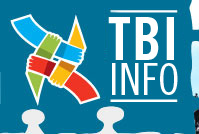You are here : Home > Library > Experiences, perspectives, and needs of patients and their close (...) > 2004 > Kalpakjian, C.Z., Lam, C.S., Toussaint, L.L. & Merbitz, N.K. (2004). (...)
Kalpakjian, C.Z., Lam, C.S., Toussaint, L.L. & Merbitz, N.K. (2004). Describing quality of life and psychosocial outcomes after traumatic brain injury. American Journal of Physical Medicine & Rehabilitation. 83(4), 255-265.
Objective: To describe the quality of life (QOL) and psychosocial outcomes of a sample of adults with traumatic brain injury in 50 community dwelling adults with traumatic brain injury and examine the associations among these variables. Design: Cross-sectional. Results: Mean QOL rating was low average. Standardized measures had acceptable internal reliability and normal distributions in this sample. Subjects had significantly lower QOL and social support, higher negative affect, and similar positive affect and spirituality compared with standardization and other nondisabled samples. They also had a significantly higher level of community integration than other traumatic brain injury samples. Regression analyses suggested that social support, community integration, and positive affect make a unique and significant contribution to the QOL variance with R of 0.492. The addition of spirituality reduced their respective unique variance, reducing positive affect to nonsignificant levels due to their high intercorrelation. Conclusions: Findings suggest that this sample experiences a wide range of QOL. Factors significantly associated with good QOL include community integration, positive affect, and social support; demographic variables had virtually no association with QOL. Evaluation of the sample’s response to standardized scales not designed for a traumatic brain injury population support their use in similar QOL investigations.
Terms of Use | 2007-2008 All rights reserved © INFO-TBI. Graphic design : François Ménard | Design : WebConforme

